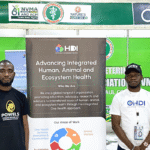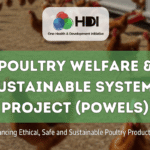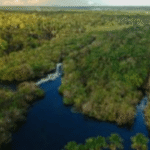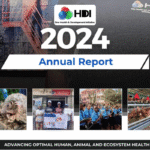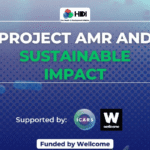
Last week, we published an article on Dead Fishes on Nigerian Shores – A Public Health Emergency which raised an alarm on the daily occurrences and sightings of dead fishes on the coastal states of southern Nigeria. We also provided details on the suspicions of water toxicity being the cause of death of fishes as stated by veterinary surveillance officers in Akwa-Ibom who conducted preliminary investigations in the area. We further provided detailed information on the multiple potential implications and impacts that these occurrences of dead fish will have on various aspects of public health, biodiversity, economic livelihood, and food insecurity in Nigeria.
In this article, we provide statements from key professional experts in the field of Aquaculture and Environmental Toxicology whom we have interviewed. They provide further insights into the cause of the dead fishes and provided useful recommendations for holistic solutions to solving this issue and preventing future occurrences. Their statements and recommendations are provided below;
Dr. Temitope O. SOGBANMU, PhD
Environmental Toxicologist; Researcher, and Lecturer at Department of Zoology, University of Lagos, Nigeria; and Project Lead, Evidence Use in Environmental Policymaking in Nigeria (EUEPiN) (www.tosogbanmu.wordpress.com)
Catastrophic effects on aquatic biodiversity in the specific aquatic ecosystems where sudden sightings of dead fisheries have been reported can be cascaded along the food chain and food web. Potential health effects to humans consuming the ‘contaminated’ dead fisheries intentionally or unintentionally might be imminent. Sudden fisheries kill of this magnitude has been associated with toxins that can be released from harmful algal blooms (HABs). This hypothesis, as well as a history of hydrocarbon and organics pollution in aquatic ecosystems of the Niger Delta, is postulated as potential cursors of this incidence. Therefore, a full-scale post-impact assessment is important to be commissioned urgently by the government and environmental regulatory agencies (such as the Federal Ministry of Environment) involving multi-disciplinary and multi-stakeholder engagements. Holistic ecological and human health risk assessment should be conducted involving Environmental Toxicologists, Environmental Chemists, Wildlife Experts, Microbiologists, Botanists, Public Health Experts, Sociologists/Socio-Economists, Fisheries Experts, Geographers, and Stakeholder Communities. Holistic engagements of this nature will provide evidence-based information for appropriate interventions, management and to forestall future occurrences. All of these are important to attain the United Nations Sustainable Development Goals 3 (Good health), 6 (Clean Water and Sanitation, 11 (Sustainable Cities and Communities), 14 (sustaining life below water), and 15 (Sustainable life on land).
Madam Foluke Areola
Fisheries, Aquaculture & Quarantine Professional, Consultant and Administrator; First Federal Director of Fisheries Quarantine in Nigeria, and first female acting Federal Director of Fisheries and Aquaculture of the Federal Ministry of Agriculture and Rural Development (FMARD), Nigeria.
A range of suggestions have been given as the probable causes of the sudden appearance of dead fish said to have been identified as croaker and some crabs in Nigerian coastal waters. There have been several reports with claims in different locations where the dead fishes were found and a whole range of the probable causes of the massive fish kill. Could it have been due to chemical pollution, environmental disturbance, or bacterial infection as already suggested by some research scientists? Or are there other factors that could have led to a bloom of poisonous jellyfishes or other foreign invasive species such as diatoms that drift to a shoal of croaker fish to have fed on, resulting in their poisoning? Is there the possibility of a fish dump from a vessel which had issues of quality with the croaker fish catch, as other fish species were not affected? The dumped fish which may have been treated chemically were now drifted to the shore or how else do we explain the reported decay from the tail instead of the head and the disintegration of the flesh of the fish, if the death has been due to natural causes. The other aspects of the physical appearance of the fish were not stated in any of the reports – were the fishes’ eyes bulging? Was the flesh firm prior to the fish being smoked? There are many unanswered questions until the report of the investigations are out.
RECOMMENDATIONS
- Identification of the exact root causes of the massive fish kill – It is important to find exactly what happened from the water quality analysis, a post- mortem on the dead fish, and a biopsy of a live fish in the same environment. Soil samples, sediments, and aquatic plants in the same environment must be taken from the surface and bottom of the sea respectively, and should be analyzed. It is however not certain where the poisoning or otherwise took place because of the movement of water which could have caused a drift of the dead fishes over an unknown distance. The results of the analysis should give an indication of the causes of death.
- Coastal Water Monitoring: This is expected to be carried out by core scientists and fisheries experts on a regular and consistent basis. The Nigeria Institute of Oceanography and Marine Research (NIOMR) used to carry out these functions by monitoring physiochemical parameters such as temperature, dissolved oxygen, nitrates, etc. If these were being done as expected, an unexplainable sudden change in the parameters would have prompted immediate action before the massive fish kill. Are there functional research vessels for the expected scientific exploration of the coastal waters? The research and fisheries institutions should be well funded and empowered to carry out proper scientific monitoring of the coastal waters. There are organizations without specialization in fisheries or oceanographic research which now delve into issues that are outside their areas of core competencies because they are well funded. Nigeria cannot boast of a good standard fisheries laboratory; research vessels and other efficient monitoring instruments and even protocols for monitoring the coastal waters.
- Surveillance of our coastal waters: There should be a co-management structure composed of coastal communities and Department of Fisheries in the coastal states, academia and research community that will coordinate all the different activities in our coastal waters and report natural or anthropogenic occurrences of pollution, presence of foreign fishing vessels, environmental disturbance, bacterial infections, appearances of invasive species, etc. A community based coastal management complimenting an ecosystem-based management approach is encouraged along the entire coastline of the country. The fishing communities from experience have a good knowledge of the coastal waters. Their knowledge should be harnessed, documented, and applied by scientists, fisheries experts, administrators, environmentalists, nutritionists, and other stakeholders.
- Establish good governance for overall Fisheries and Coastal Water Management within overall National Coastal Management. The Fisheries and Coastal Water Management should exhibit inclusiveness, transparency, and stakeholder participation in the different related fields such as fisheries, environment, nutrition, health, and other economic activities along the coastal waters. It is important to have regular stakeholder education and enlightenment on the need for collaboration in achieving a goal of a healthy environment for the sustainability of the resources upon which the local communities depend on food security and their livelihood. These are aside other economic importance of the coastal waters. I cannot confirm if there had been any health checks on the members of the communities that consumed the dead fish or a strange indicator of health issues in recent times outside of COVID19 which could be traced to the consumption of the fish. If there are no deliberate efforts to monitor this, it may go unnoticed or be attributed to other reasons.
- Establishment of a Fisheries Commission that would ensure that there is accountability in the monitoring, control, and surveillance of the Nigerian Coastal Waters. There would have been a better-coordinated approach to the present situation if this was previously established because the commission would have been held responsible.
Professor Olufemi Bolarinwa Adedeji
Professor of Aquatic Epidemiology and Toxicology, Public Health, Food Safety, and Fish Diseases at the Department of Vet Public Health & Preventive Medicine, University of Ibadan.
Occurrences such as effluents discharges, oil spills, acid rain, industrial wastes, and thermal heat can lead to noxious consequences on fish and other aquatic life, and cause destruction of aquatic nurseries. For effective prevention/control of present or future occurrences, the following steps are recommended:
- Strong political will – The National Policy on the Environment (1989) whose goal was “to secure for all Nigerians a quality environment adequate for health & wellbeing” should be revisited. Some multinational companies do not fulfill their obligations to host communities, with regards to ensuring that environmental hazards are mitigated. Hence, the government should enforce existing environmental laws, with stiff penalties for defaulters. New laws should be enacted to safeguard aquatic life on our waters. Also, clean up should be carried out on oil spillage sites and contaminated land areas.
- Multidisciplinary research must be carried out on collected to ascertain specific causes and determinants.
- There should be adequate enlightenment of the residents of the coastal areas and their community leaders on the hazards and other potential consequences of the incidence.
- Use of Geographical Information Systems should be deployed for monitoring of aquatic ecosystem
- They must be constant monitoring of industrial wastes by industries (ranging from oil, gas, pesticides, and metals) and human activities
Dr. Adesalu Taofikat,
Phycologist, Aquatic Environmentalist, Algal Biotechnologist; Expert in Harmful Algal Bloom (HAM) studies and Associate Professor at the Department of Botany, University of Lagos.
There are many things that could result in a fish kill in an ocean as observed here in Nigeria. One of such things could be from the contamination of the water by heavy metals (an accumulation over a period of time) which gets to aquatic life. This may include phytoplankton (microalgae) which are the primary producers in such environments and are being consumed by organisms higher in the food chain. If these groups of organisms are infected by such contaminants and are being ingested by other aquatic life (such as the affected fishes or crabs) it could lead to such death. Accumulation of such contaminants and harmful toxins by the producers, which is then passed on to the secondary consumers can lead to the death of the fishes. Further and detailed research work would be needed to ascertain the type of contaminant(s), the source, and implication on the health of humans that have consumed the contaminated fishes, crabs, and other aquatic life.



